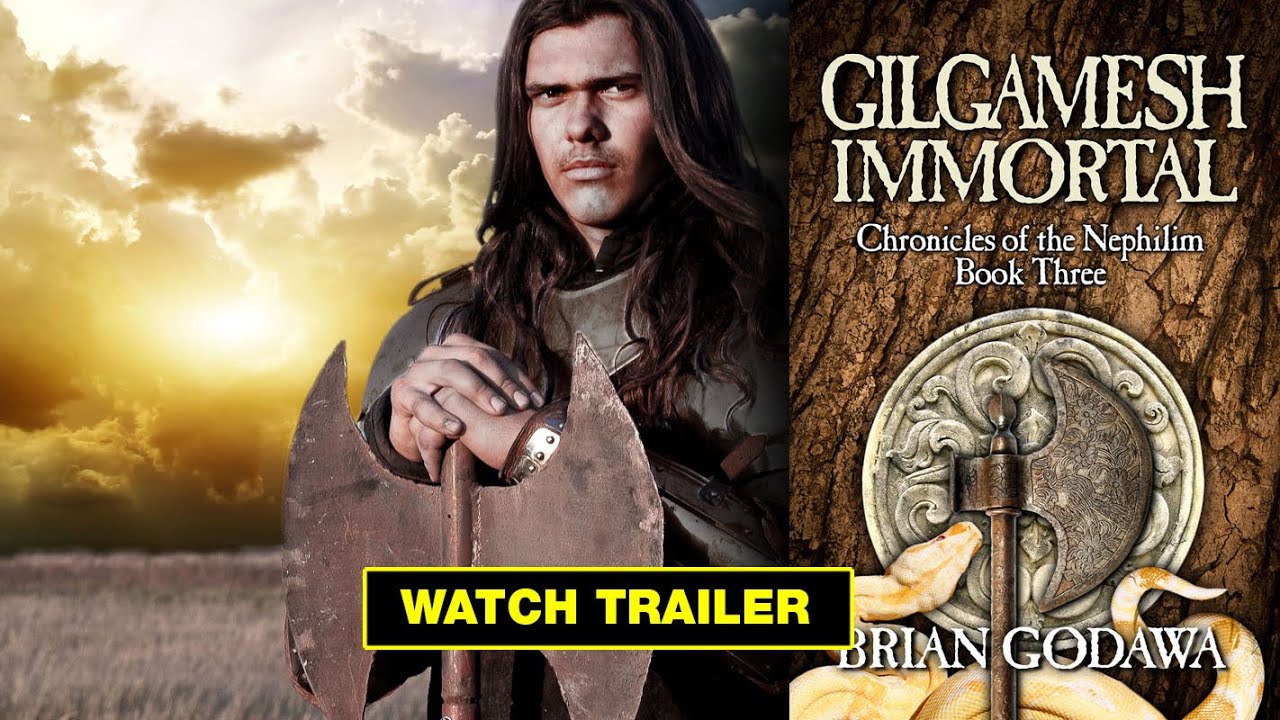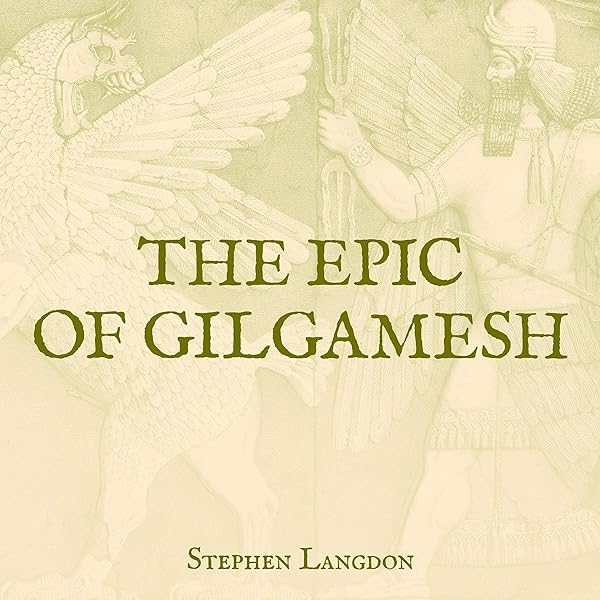The epic tale of Gilgamesh is one of the oldest surviving works of literature, dating back to ancient Mesopotamia. This legendary figure has captured the imagination of readers for centuries with his larger-than-life exploits and search for immortality. But what many may not know is that Gilgamesh also makes an appearance in the enigmatic Book of Enoch, an ancient text filled with apocalyptic and visionary writings. In this article, we will explore the connections between Gilgamesh and the Book of Enoch, uncovering the intricate threads that bind these two narratives together.
Seemore: Why Stay Away from the Book of Enoch
Gilgamesh and the Epic of Enoch

To fully understand the significance of Gilgamesh’s presence in the Book of Enoch, it is essential to first delve into the origins and themes of both tales. The Epic of Gilgamesh, believed to have been written around 2100 BC, is considered one of the earliest surviving works of literature. It tells the story of a powerful Sumerian king who embarks on a quest for immortality after the death of his friend Enkidu. Along the way, Gilgamesh learns valuable lessons about kingship, mortality, and what it means to be human.
On the other hand, the Book of Enoch is a collection of ancient Jewish texts that were composed between the third century BC and the first century AD. These writings offer a glimpse into early Jewish beliefs regarding angels, fallen angels, and prophetic visions of the end of days. While the book does not hold a prominent place in the canon of the Bible, it is considered a significant source for understanding ancient Jewish thought and traditions.
The Antediluvian Gilgamesh: Connections to the Book of Enoch

One of the most striking aspects of the Book of Enoch is its depiction of the pre-flood world and the great cataclysm that wiped out most of humanity. This flood narrative bears strong similarities to the story of the Great Flood in the Epic of Gilgamesh, where the king is warned by the gods and instructed to build an ark to save himself and his people from the impending doom. In both tales, the main character is instructed by a higher power and tasked with preserving life in the face of overwhelming destruction.
But perhaps the most significant connection between Gilgamesh and the Book of Enoch is the presence of giants or Nephilim. These beings are described as offspring of fallen angels and human women who were known for their immense size and strength. In the Epic of Gilgamesh, the monstrous Humbaba and the bull-like creature, the Bull of Heaven, share similar characteristics with the giants mentioned in the Book of Enoch. This shared mythology suggests a deep connection between the two narratives and their origins.
Parallels and Intersections between Gilgamesh and Enochian Traditions
As we dive deeper into the parallel themes and motifs present in Gilgamesh and the Book of Enoch, it becomes apparent that these two tales intersect in more ways than one. The concept of kingship and the role of rulers in society is a central theme in both stories. In the Epic of Gilgamesh, the king must learn the importance of balancing his power and responsibilities to his people. Similarly, in the Book of Enoch, fallen angels, often equated with rulers, are condemned for abusing their authority and causing chaos on Earth.
Another striking similarity between the two texts is the presence of prophetic visions and apocalyptic themes. In Gilgamesh, the king experiences a series of dreams and visions that foreshadow his fate and the eventual downfall of his city. These visions are mirrored in the Book of Enoch, where characters like Enoch and Noah receive divine revelations about the end of days and the fate of humanity. These shared visions not only tie the two narratives together but also offer a glimpse into the ancient belief systems that influenced their creation.
The Gilgamesh Flood Narrative and its Echoes in Enoch

The most well-known and studied part of the Epic of Gilgamesh is undoubtedly the flood narrative, which has numerous parallels with the biblical account of the Great Flood. But what many may not know is that this same story also appears in the Book of Enoch. In the Book of Enoch, the fallen angels are said to have taught humans advanced technologies and forbidden knowledge, leading to widespread corruption and violence. This echoes the tale of Gilgamesh and his quest for immortality, where he seeks knowledge from the gods and ultimately causes destruction in his kingdom.
Furthermore, the Book of Enoch also mentions a great deluge that will wipe out most of mankind as punishment for their sins. This punishment is eerily similar to the one in the Epic of Gilgamesh, where the gods decide to destroy humanity for their wickedness. These similarities suggest a shared cultural heritage and a cross-pollination of ideas between the Mesopotamian and Jewish traditions.
Giants, Nephilim, and the Shared Mythology of Gilgamesh and Enoch
One of the most intriguing aspects of Gilgamesh’s inclusion in the Book of Enoch is his portrayal as a Watcher or Grigori, a celestial being tasked with observing and guarding the Earth. According to the Book of Enoch, the Watchers were originally sent to guide and protect humanity but ended up corrupting them instead. This mirrors the tale of Gilgamesh, who starts off as a benevolent ruler but becomes corrupted by his pursuit of power and immortality.
Moreover, the presence of giants and Nephilim in both narratives suggests a shared mythology and worldview. In the Epic of Gilgamesh, the monstrous Humbaba and the Bull of Heaven are described as huge and powerful creatures. Similarly, the Book of Enoch mentions giants who are said to be the offspring of fallen angels and human women. These parallels further strengthen the connection between the two tales and highlight the widespread influence of these ancient beliefs and traditions.
Prophetic Visions and Eschatological Themes in Both Epics
Another notable similarity between Gilgamesh and the Book of Enoch is their focus on prophetic visions and eschatological themes. In both narratives, characters receive divine revelations about the end of days and the fate of humanity. These visions often have a sense of urgency and foreshadow an impending cataclysm that will wipe out most of mankind.
The epic journey of Gilgamesh can also be seen as an allegory for the ascent of the soul towards divinity, which is a prominent theme in the Book of Enoch. The king’s quest for immortality symbolizes man’s desire to transcend his earthly limitations and reach a higher state of being. This idea is mirrored in the concept of Enochian Ascent, where Enoch is transformed into a celestial being after he ascends to heaven. The shared emphasis on divine transformation and ascending towards the heavens further solidifies the connection between Gilgamesh and the Book of Enoch.
Exploring the Divine and The Otherworldly in Gilgamesh and Enoch
Both Gilgamesh and the Book of Enoch offer a glimpse into the ancient worldview and belief systems of their respective cultures. They present a cosmic tapestry of gods, angels, and other supernatural beings, all woven together to create a grand narrative of divine intervention and the struggle between good and evil.
In the Epic of Gilgamesh, the gods are portrayed as capricious and temperamental, often intervening in the lives of humans and causing chaos. This mirrors the depiction of fallen angels in the Book of Enoch, who were once benevolent beings but became corrupted and brought destruction upon the Earth. Both narratives highlight the fragility of the human condition and the constant struggle between mortal and divine forces.
The Role of Watchers and Fallen Angels in Gilgamesh and Enoch
As mentioned earlier, one of the most fascinating aspects of Gilgamesh’s presence in the Book of Enoch is his portrayal as a Watcher or Grigori. According to the book, these beings were initially tasked with guiding and protecting humanity but fell from grace and corrupted the Earth instead.
This idea of fallen angels and their role in corrupting humanity is also present in other ancient texts such as the Book of Jubilees and the Book of Giants. These texts offer different accounts of the same story, providing further insight into the mythology surrounding the fallen angels and their connections to humanity. This shared mythology can be seen as a precursor to the concept of Satan and the fallen angels in Abrahamic religions, highlighting the enduring influence of these ancient beliefs.
Unveiling the Ancient Mesopotamian and Biblical Connections through Gilgamesh and Enoch’s Stories
The inclusion of Gilgamesh in the Book of Enoch not only offers a fascinating glimpse into these two ancient narratives but also provides a deeper understanding of the cultural and religious connections between Mesopotamian and biblical traditions. These shared themes and motifs further reinforce the idea that many ancient cultures were influenced by each other’s beliefs and traditions, leading to a rich tapestry of shared mythology and folklore.
Moreover, the study of Gilgamesh and the Book of Enoch also sheds light on the origins of key concepts and ideas that are still prevalent in modern society. From the flood narrative to the fallen angels, these ancient tales have left an indelible mark on our collective consciousness, shaping our understanding of the world and our place in it.
Conclusion
In conclusion, the inclusion of Gilgamesh in the Book of Enoch offers a tantalizing glimpse into the intricate web of connections between Mesopotamian and biblical traditions. From shared themes and motifs to similarities in narrative structure, these two tales are intertwined in ways that highlight the enduring legacy of ancient beliefs and mythologies. The enigmatic figure of Gilgamesh, with his larger-than-life exploits and multifaceted legacy, continues to captivate readers and scholars alike, leaving an indelible mark on the tapestry of human history.
